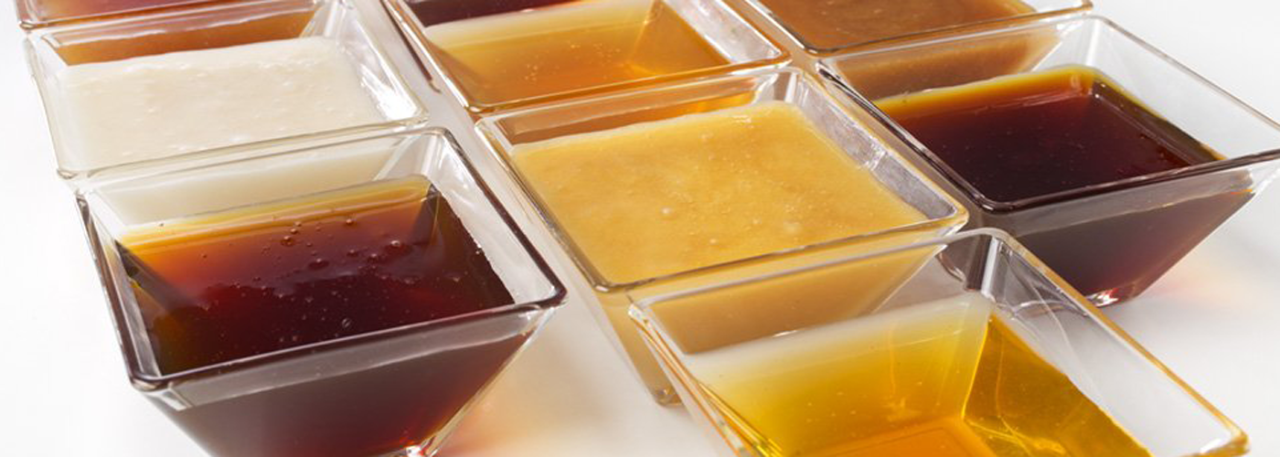.png.transform/rendition-xs/image_image%20(1).png)
Miel de Tenerife PDO
Honey produced by melliferous bees on the island of Tenerife, from the nectar of flowers or secretions from other parts of plants that grow in the island's different ecosystems, in removable frame hives and not subjected to heat treatment during processing. It is sold as liquid, creamy or crystallized honey, as honeycomb or as pieces of honeycomb.
Tasting notes
Tenerife honeys typically come in a huge variety of colors, flavors and types, reflecting the island's enormous range of ecosystems and plant life. No sensory defects (fermented, smokey, etc.) can be detected in the honeys following sensory analysis; their organoleptic characteristics - smell, flavor and texture - vary considerably, as does the color, which ranges from almost clear to dark amber, owing to the diversity and specificity of the flowers they come from.
Tenerife honey can be:
- Polyfloral honey: this honey is derived from the nectar of many types of flowers.
- Monofloral honey: made primarily from the nectar of one type of flower in particular.
- Honeydew honey.
Other notes
The honey protected under the "Miel de Tenerife" PDO has the following properties:
Moisture: not greater than 18%
Water activity (aW): not greater than 0.620
Hydroxymethylfurfural (HMF): not greater than 20 mg/kg of honey at the time of packaging
Diastase activity (α-amylase): not less than 12 Schade units
Free acidity: not greater than 50 meq/kg.
pH: between 3.40 and 6.00
Proline: not less than 150 mg/kg of honey
Fructose + Glucose: greater than 60 g/100 g of honey
Sacarose: less than 4 g/100 g of honey.
Production / Processing method
The honey is obtained from hives distributed throughout the various ecosystems around the island.
The honeycombs containing the honey stored in opercular cells are taken to special rooms in premises where they are extracted using only a cold centrifugal process and filtering is carried out immediately after removal from the extractor; this enables the honey to be stored with no physical impurities, ready for packaging, no matter what its physical state may be.
The extracted honey is then decanted into maturators, tanks or food standard containers used exclusively for honey, which have labels on the outside displaying the information needed to ensure its traceability.
Miel de Tenerife is packaged in containers suitable for food use (glass, PET, etc.) and hermetically sealed. The containers also have a guarantee seal to prove that the packaging has not been tampered with.
Geography / Relief and climate
Tenerife is the largest and highest island in the Canary archipelago.
Its relief features a range of mountains crossing the island from the north-east to the south-west, gradually increasing in height until it reaches Las Cañadas and the Teide volcano, the highest point on the island and in the whole of Spain, at an altitude of 3,718 meters.
Climate plays a fundamental role in human activity on the island. The prevailing Trade winds mean the weather is very different on the windward and leeward sides of Tenerife. As a result, the vegetation consists of a wealth of flowering plants and shrubs growing at various heights and aspects all over the island.
The soil also has a very specific series of features owing to its volcanic origin, with a wide variety of soil types, ranging from deep, fertile soil to rough and barren landscapes known as "malpais". This variability in soil conditions on the island has a major influence on the distribution of plant species, resulting in the presence of very specific types of vegetation that have adapted to grow in only certain types of soil. Equally, the composition of plants and the nectar they produce is influenced by the distinctive composition of the substrata on which they grow.
All these factors condition the various levels at which vegetation grows from sea level to the summit. Tenerife is home to 1,370 botanical species, 740 of which are native to the island. Of these, around a hundred are considered to be essential plants for bees, for their nectar, pollen or propolis. This presence of native species and the various flowering periods resulting from the island's geomorphology and particular soil and weather conditions mean that it can support unique flower combinations found nowhere else in the world, all of which are reflected in the diversity and special properties of Tenerife honeys.
Regulatory Council
Tenerife Association of Apiarists (APITEN)
San Simón, 51
38360 El Sauzal
Santa Cruz de Tenerife (Canary Islands)
Tel.: (+34) 922 562 711
Fax: (+34) 922 561 806
apiten@apiten.es
www.mieldetenerife.org
Sources:
- Spanish Ministry of Agriculture
Tenerife is home to 1,370 botanical species, 740 of which are native to the island.


- Miel de Tenerife 1
- Miel de Tenerife 2

Santa Cruz de Tenerife (Canary Islands)
